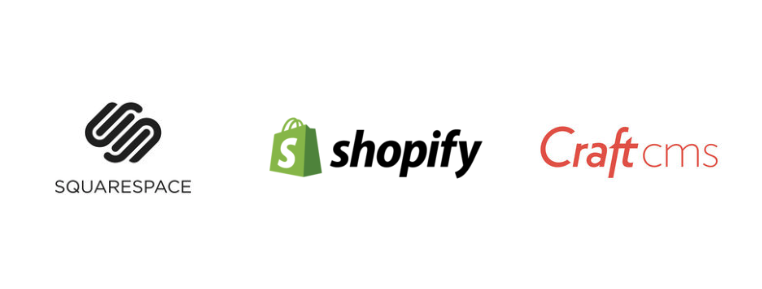Choosing a CMS in 2018
There are a lot of moving pieces when it comes to building a new website: you have to consider the layout of your pages, the written content that goes on each one, and the design language that will make the entire user experience engaging. It’s easy to get wrapped up in the look and feel of a new website but it’s equally as important to consider the foundation that you website is built on. Choosing the right content management system (CMS) is one of the most important decisions a person can make during the planning and construction of a new website: it’s how you manage your day-to-day content updates and heavily dictates your website’s functionality.
When you build a new website, it should be built with a big-picture mindset. Planning on expanding to multiple locations? Your CMS should let you add more than one. Hope to have e-commerce on your site one day? Make sure your CMS has that capability. So how do you choose? The marketplace is growing rapidly and new CMS options are popping up every year. Committing to a platform can feel daunting, but considering the following items can help make your final decision a bit easier:
1. Honestly Evaluate Your Website’s Functionality Needs
One of the very first things we do with website clients is walk through their technical needs for the upcoming site. We go over how their current site functions (if applicable) and what external applications or software they use. It’s important to consider any possible integrations, including social media accounts, customer relationship managers (CRMs), and email marketing platforms. If functionality needs are more technical and involve using robust application program interfaces (APIs), it’s also important to consider whether or not those APIs will work with the CMS’s infrastructure.
2. Planning on using plugins? Consider the technical debt.
WordPress is a popular CMS option because of the robust number of plugins available to extend its functionality. Need e-commerce? There’s a plugin for that. Drag & drop functionality? There’s a plugin for that too. The problem with plugins lies in the amount of technical debt that they add to your website: you risk discontinued support, security issues, and the need to stay up-to-date with the latest version every time you commit to a plugin (or four). The more plugins you have, the more your site depends on outside sources to keep it functioning. This doesn’t mean you need to abandon the use of plugins altogether. Instead, make careful decisions about when they’re appropriate to include on your site. An even better solution? Try to find a CMS that offers out-of-the-box functionality for the majority of your needs before you start your project.

3. Make the most out of your budget
It’s no secret that websites can be expensive. Beyond the initial cost of design and development, you also need to pay for a domain, hosting, email services, and an SSL certificate. Take an honest look at the breakdown of your costs on an annual basis. A cloud-based CMS like Squarespace may be a few dollars more a month, but when the price includes hosting, an SSL certificate, and technical support, you may find yourself saving money in the long run.
4. Don’t be afraid to make a change
“But my website has always been on [insert CMS name here].” That doesn’t mean you have to stick with it. If your website is more than five years old, we strongly encourage you to take a look at what the marketplace has to offer. The landscape of CMS offerings is always changing, and you may be surprised at the alternative options you can find that can serve your website more efficiently or cost-effectively.
Our official recommendations on content management systems are always changing. We love using Squarespace for straight-forward marketing sites. At General Public, we take advantage of their JSON-T based developer platform, building completely custom websites that leverage their straight-forward graphical interface. Our favorite CMS for e-commerce clients is Shopify, whose liquid templating language allows complete control of the user experience from start to finish, as well as some great marketing tools like abandoned cart emails. The more complex a site gets, the heavier we lean towards CraftCMS, a content-first platform that offers us complete control over almost every aspect of the client-side and server-side build.

If you’re just starting your CMS research, we encourage you to check out the resources linked above or do a quick Google search on your own. It goes without saying that every platform has benefits and drawbacks, so take your time and consider what options work best for your unique needs.
